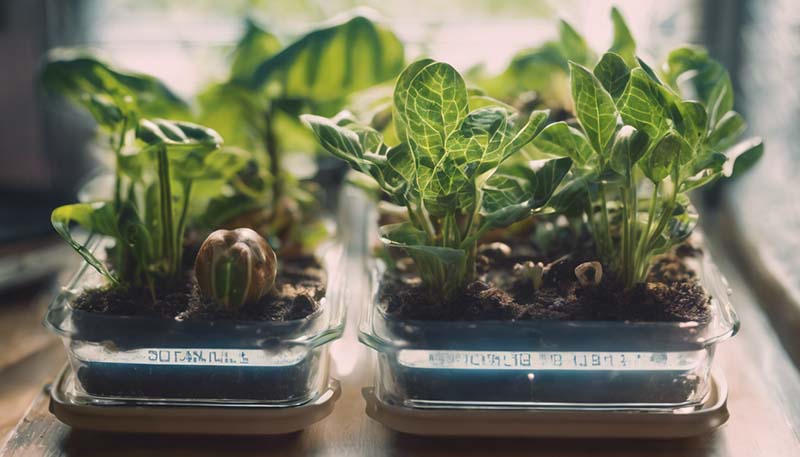Sustainable indoor gardening is not just about growing plants inside your home; it's about doing so in a way that is environmentally friendly, cost-effective, and efficient. One of the most promising technologies for achieving this is solar power. Solar power can be harnessed to provide light, heat, and electricity for your indoor garden, reducing your reliance on non-renewable energy sources and creating a more sustainable growing environment.How to Use Solar Power for Sustainable Indoor Gardening
Understanding Solar Power
Solar power is energy from the sun that is converted into electricity using photovoltaic (PV) panels or solar panels. These panels are made up of solar cells that absorb sunlight and convert it into direct current (DC) electricity. An inverter is then used to convert this DC electricity into alternating current (AC) electricity, which is the type of electricity used in homes and businesses.
Advertisement
Solar Power for Indoor Gardening
There are several ways you can use solar power to support your indoor garden:
1. Solar Lighting
One of the most straightforward applications of solar power in indoor gardening is for lighting. Plants require light to grow, and while natural sunlight is the best source, it may not always be available, especially for indoor gardens. Solar-powered LED grow lights can be a great alternative. These lights are energy-efficient and can be charged during the day to provide light for your plants during the evening or on cloudy days.
2. Solar Water Pumps
Solar-powered water pumps can be used to circulate water in hydroponic systems or to provide aeration in fish tanks and ponds. These pumps are typically small and can be placed directly in the water, making them ideal for indoor use. They are also quiet and low-maintenance, making them a good choice for indoor gardens.
3. Solar Heating
Maintaining the right temperature is crucial for the health and growth of your plants. Solar thermal systems can be used to heat water, which can then be circulated through a radiant heating system or used to warm air in a greenhouse. This can help to reduce your energy bills and create a more stable environment for your plants.
4. Solar Electricity for Gardening Equipment
Many gardening tasks, such as watering, pruning, and harvesting, can be made easier with the help of electrical equipment. Solar panels can be used to generate electricity for these devices, reducing your reliance on grid electricity and making your indoor garden more sustainable.

5. Solar-Powered Ventilation
Proper ventilation is essential for preventing the buildup of excess moisture and maintaining good air quality in your indoor garden. Solar-powered fans and vents can help to circulate air and remove heat, creating a healthier environment for your plants.
Implementing Solar Power in Your Indoor Garden
Here are some steps to help you get started with using solar power in your indoor garden:
- Assess Your Energy Needs: Determine the energy requirements of your indoor garden, including lighting, heating, and any electrical equipment you plan to use.
- Choose the Right Solar Equipment: Based on your energy needs, select the appropriate solar panels, batteries, and inverters. You may also need additional components, such as charge controllers or mounting hardware.
- Design Your System: Plan the layout of your solar power system, considering factors such as the available space, the direction your solar panels will face, and the location of your batteries and inverters.
- Install Your System: Follow the manufacturer's instructions to install your solar power system. If you're not comfortable doing this yourself, consider hiring a professional to ensure your system is installed correctly and safely.
- Monitor and Maintain: Regularly check your solar power system to ensure it is functioning properly. Clean your solar panels as needed to ensure they are receiving the maximum amount of sunlight.
Benefits of Using Solar Power for Indoor Gardening
Using solar power for indoor gardening offers numerous benefits, including:
- Reduced Energy Costs: Solar power can help to reduce your energy bills, especially if you use it to offset a significant portion of your indoor garden's energy needs.
- Environmental Sustainability: Solar power is a renewable energy source that produces no greenhouse gas emissions, making it a more sustainable choice for indoor gardening.
- Reliability: Solar power systems can provide a reliable source of energy, even during power outages or when grid electricity is unavailable.
- Independence from Utility Companies: By generating your own electricity, you can reduce your reliance on utility companies and protect yourself against rate increases.
- Long-term Savings: While the initial cost of a solar power system can be high, the long-term savings on energy bills can make it a cost-effective investment.
Challenges and Considerations
While solar power offers many benefits for indoor gardening, there are also some challenges and considerations to keep in mind:
- Initial Cost: The upfront cost of solar panels and related equipment can be high, although this can be offset by long-term savings on energy bills and potential government incentives.
- Space Requirements: Solar panels require a significant amount of space to generate enough electricity for indoor gardening needs. This can be a limitation for smaller indoor spaces.
- Weather Dependence: The effectiveness of solar panels can be affected by weather conditions, such as cloud cover or rain, which may require additional energy storage solutions, like batteries.
- Maintenance: Solar panels and systems require regular maintenance to ensure they are functioning optimally, which can involve additional time and costs.
Conclusion
Solar power is a versatile and sustainable energy source that can greatly benefit indoor gardening. By understanding how to implement solar power in your indoor garden and being aware of the challenges and considerations, you can create a more sustainable and efficient growing environment for your plants. As technology advances and the cost of solar power continues to decrease, it is likely to become an increasingly popular choice for indoor gardeners looking to reduce their environmental impact and energy costs.
Comment